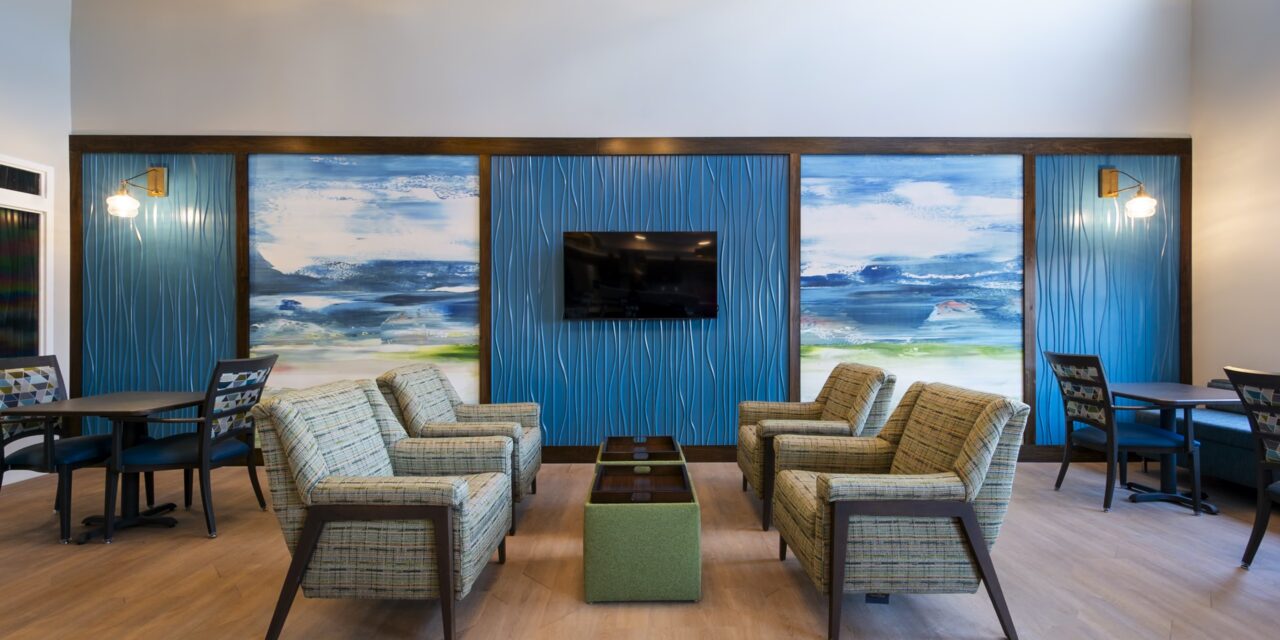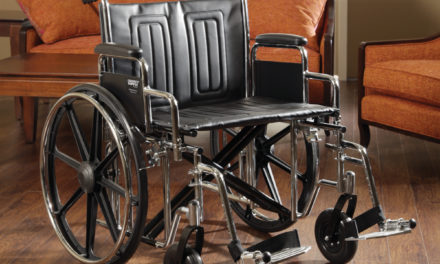2024 Senior Living design trends: increasing resident engagement through thoughtful design
Designing exceptional Senior Living spaces is about more than just selecting attractive furniture and decor – it’s about creating memorable experiences. After the social isolation many experienced the past few years, residents are craving a sense of community now more than ever before. Prioritizing experiential design can increase marketability, community engagement and resident satisfaction. Restore fun and meaningful connections for your residents, their families and your staff with these 5 senior living design tips for 2024.
1. Enhance dining with tasteful touches
Flexibility in dining: offering freedom and choice
It is common to see communities embracing flexibility in dining; the ultimate way to cater to individual lifestyles and preferences of each resident. To achieve versatility in the primary dining space, consider incorporating a variety of seating styles and table sizes as well as an accessible and shaded outdoor option. A family style table can become the heart of the community connection, while a two-person table by the window offers a more quiet retreat. Additional venue choices, such as quick-serve and bistro settings, offer residents alternative dining options. The casual atmosphere of open dining encourages social interaction in a relaxed environment; be sure to furnish it with comfortable seating and bright, welcoming decor.
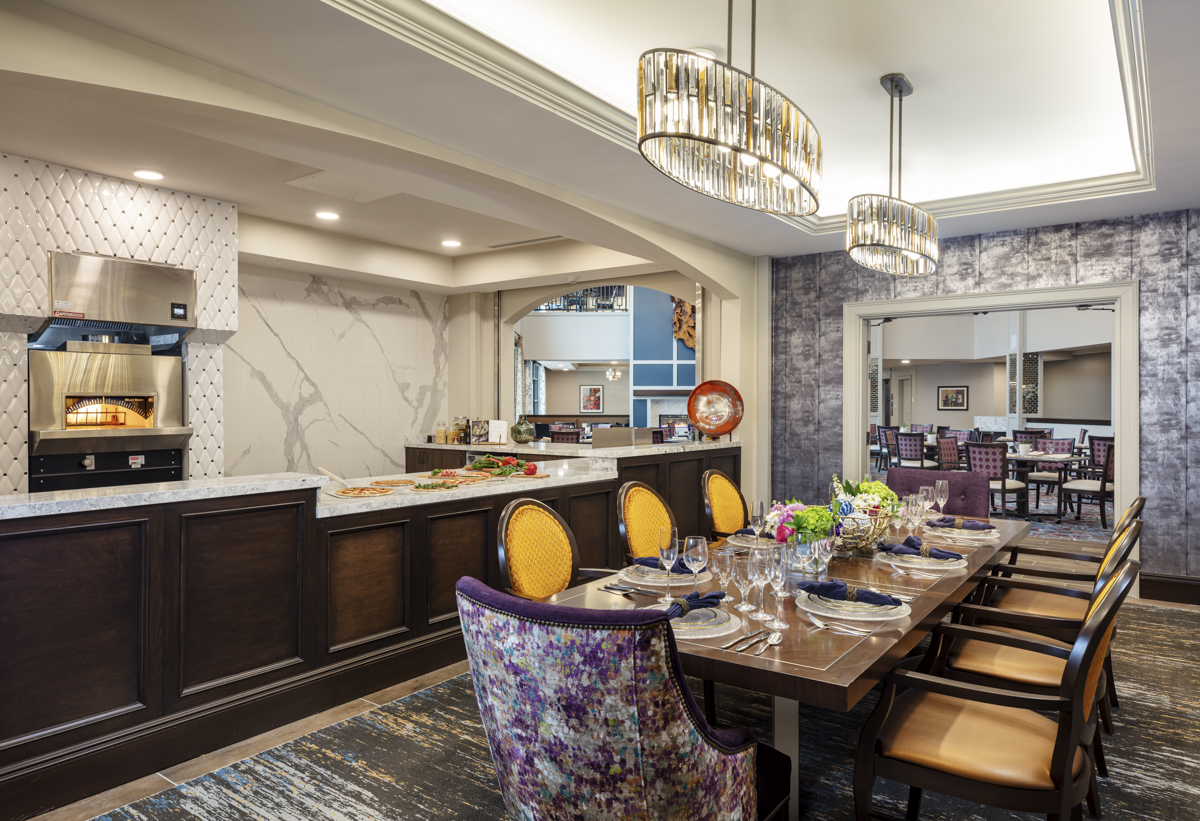
Demonstration kitchens: interactive and educational
Demonstration kitchens provide an engaging experience that hosts both dining and education.From cooking demonstrations where chefs showcase their skills and share cooking tips to classes, residents have opportunities to participate in a new and fun way.
Add in a chef’s kitchen garden to create even more opportunities to engage through sustainable food options and provide an interactive experience that allows residents to embrace each sense as they touch, smell, and taste edible decorations that look great and taste even better.
Multifunctional bar: day-to-night versatility
Take a modern approach to resident engagement and socialization by creating a dynamic and adaptable approach to food and fun. Start the morning with gourmet coffee, with bright and airy lighting and comfortable seating. As evening approaches, dim the lights and switch up the music to accommodate a more traditional bar setting for happy hour. Consider adding popular socialization opportunities for both, such as live music or hosting special events such as wine tastings.
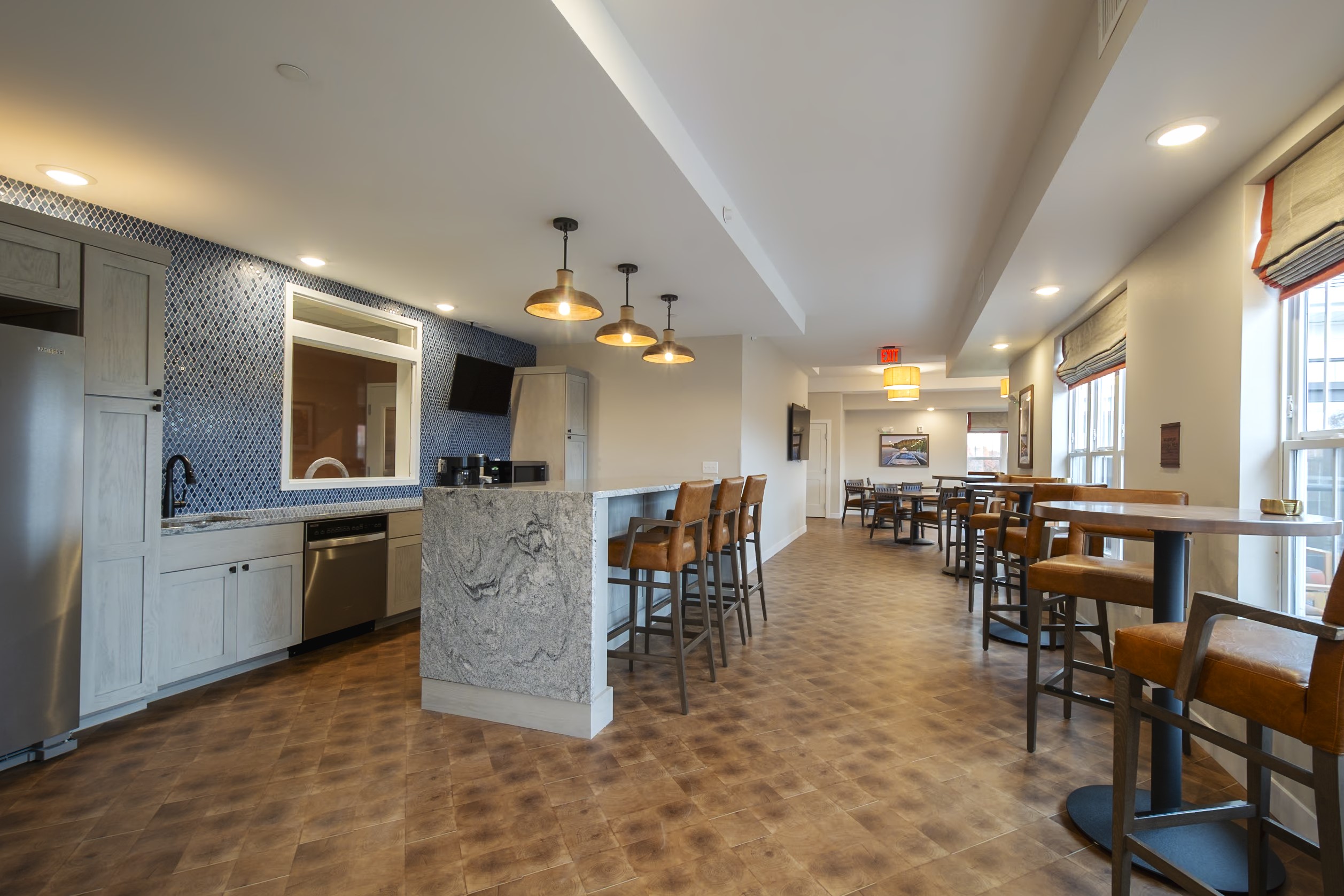
In all options, provide durable and cost-effective seating such as the Maxwell Thomas® Galveston – a faux wood metal dining chair.
2. Grow captivating environments indoors and out
Nature-inspired colors and artwork: a modern approach to a familiar concept
Redefine the way residents perceive and experience living spaces by immersing them in the natural world’s beauty. Spring Lake, the Direct Supply® Aptura® Color of the Year, is a neutral blue-gray that evokes the richness of the twilight sky, while rich burnt-orange hues call back the rugged terrain of desert landscapes. Pair each theme with art of their inspiration and add another dimension to the visual appeal of each room.
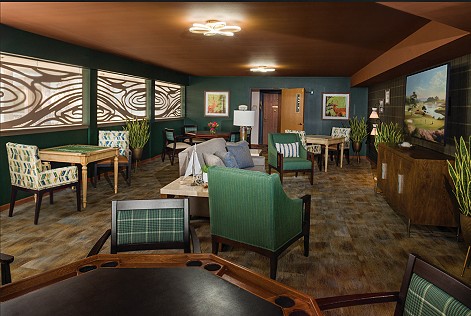
Biophilic design: forging connections between nature and the constructed environment
With 14 different patterns to choose from, biophilic design can reduce stress, improve cognitive function and creativity, improve our well-being and expedite healing1. Consider using textured glass with a pattern that looks like falling rain as an interior focal point. This utilizes the biophilic pattern of “Non-Rhythmic Sensory Stimuli” which has been found to positively impact heart rate and the sympathetic nervous system.
Outdoor destination: accessibility and interest
Senior Living interior design isn’t just about the interior – outdoor living spaces create engaging destinations for residents as well. Take advantage of the outdoors to create alternative gathering places with fresh air and natural sunlight. A fire pit and comfortable seating can create the right atmosphere for a cozy area where stories are shared with added warmth for cooler nights.
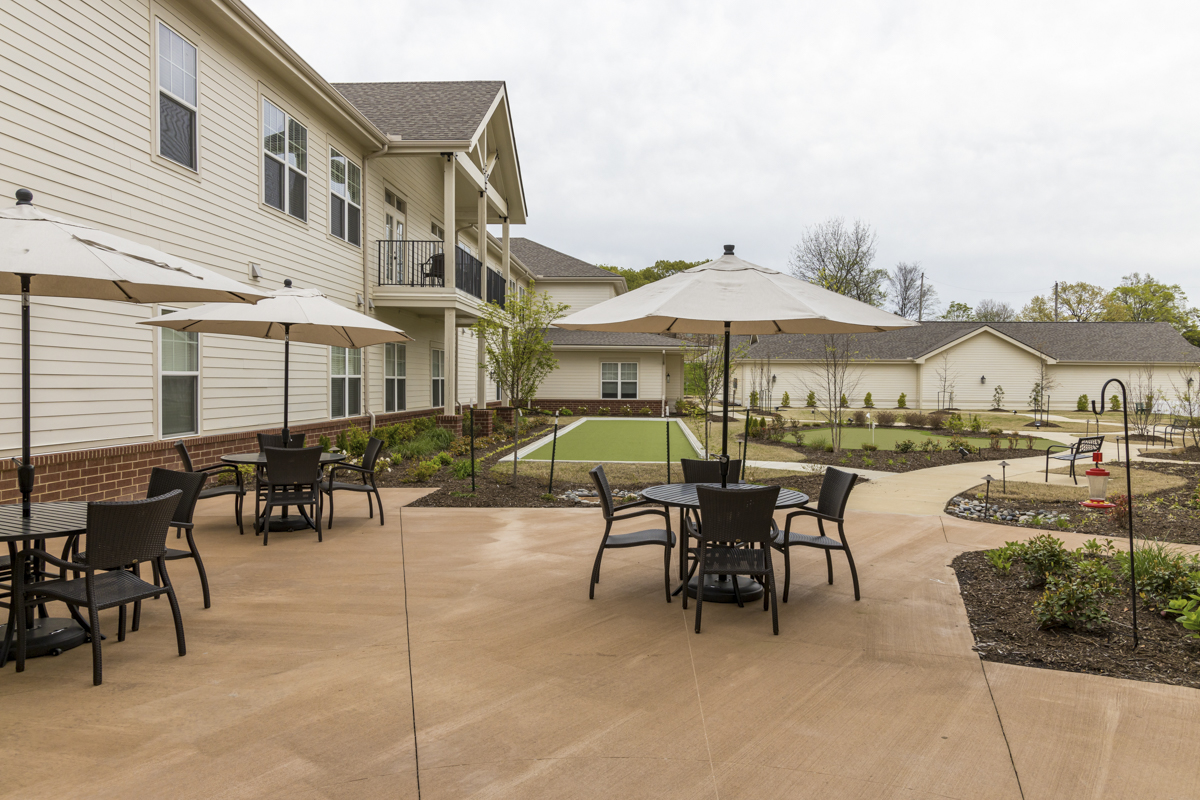
Create an outdoor retreat with functional and comfortable spaces mindful of resident preferences. Add a pergola or gazebo for a charming addition. Offering generous shade, it breaks up expansive spaces adding an element of architectural interest while creating a distinct area for socializing, relaxation or engaging in outdoor activities.
3. Create memories with experiential design
Most communities offer board games, a shuffleboard or a poker table. Yet, to genuinely make spaces distinctive and captivating for residents and families, look to move beyond these elements and aspire for a comprehensive room experience.
Design a quintessential art gallery to awaken cherished memories and capture captivating stories that resonate with all residents. Utilize wall space to establish an interactive art gallery, where the creative works of residents are displayed, fostering a vibrant and inspiring atmosphere. Consider incorporating adjustable lighting to highlight the artworks and modular wall systems for easy rotation of exhibits.
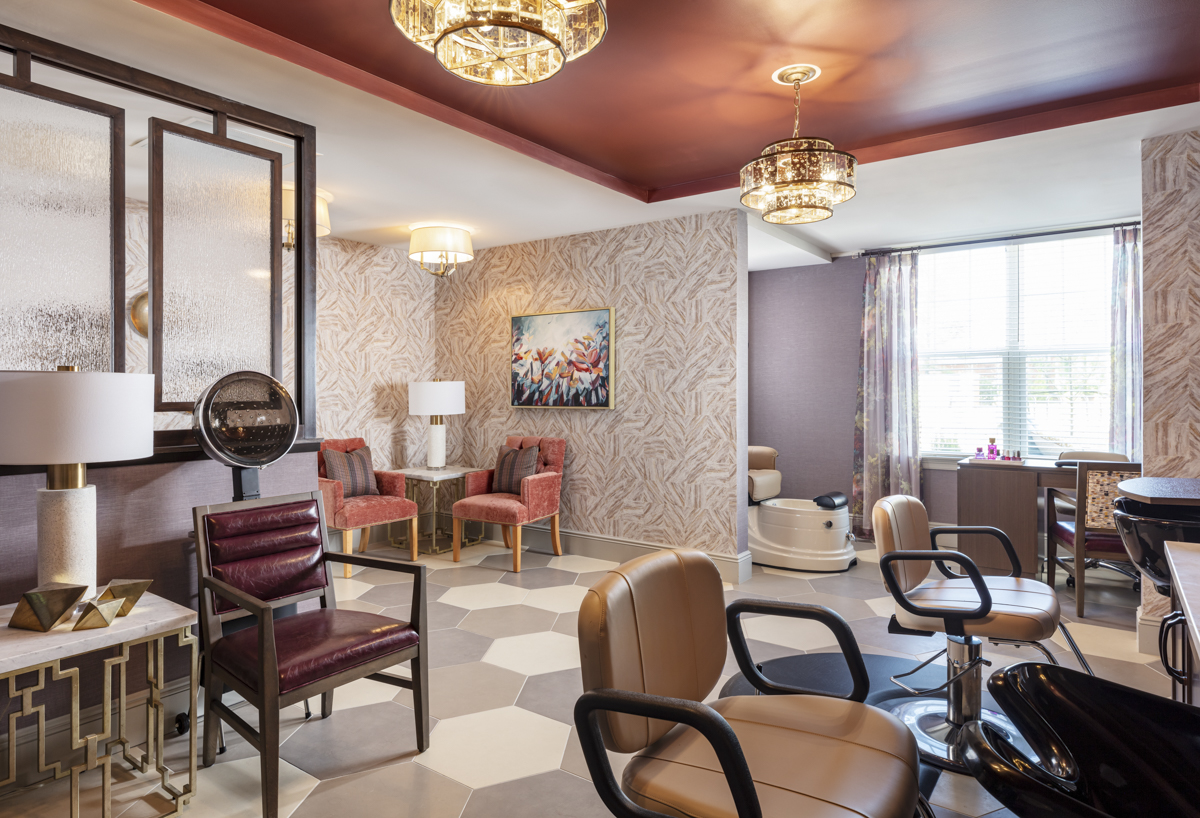
Alternatively, you can create the perfect environment for a relaxing spa day with professional salon equipment and accessories. Pair stellar service with a comfortable place to chat, or a modern barbershop, for residents to look and feel their best.
4. Cultivate success with a diverse array of spaces
Large vs small: contrasting areas for individuals
Consider the contrast between cozy library nooks and large reading tables. Cozy nooks, with comfortable armchairs and soft lighting, offer a private, intimate setting ideal for individuals who seek a quiet corner for personal reflection or losing themselves in a book. In contrast, large reading tables in the library facilitate group discussions, collaborative learning, or simply the companionship of others in a shared space. By providing these contrasting spaces, the community caters to a spectrum of preferences, enabling residents to choose settings that best suit their mood and activities at any given moment. This thoughtful design approach not only enhances the physical layout of the community but also plays a significant role in supporting the mental and emotional well-being of its residents.
Active vs Passive: spaces for all energies
Providing a diverse array of spaces can go a long way to fostering community engagement & encouraging resident wellness. Active areas are designed for engagement and socialization, like a large, well-equipped fitness center or a spacious community hall for gatherings and events. These spaces encourage residents to interact, participate in group activities, and stay physically active. On the other hand, passive spaces provide a serene environment for relaxation and introspection, such as a tranquil garden with benches under shaded trees or a quiet reading room.
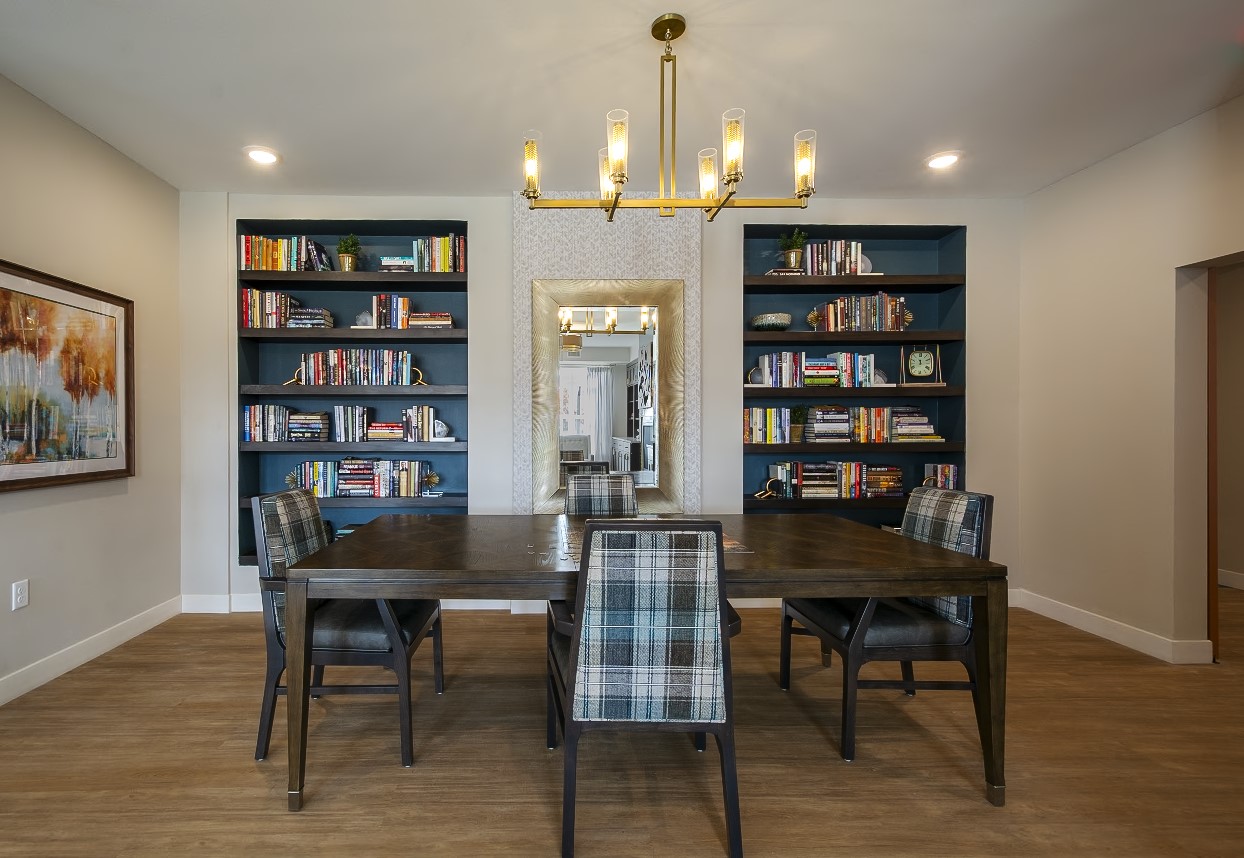
5. A multi-generational bridge: connecting local community with residents
Senior living communities have a unique opportunity to become vibrant hubs that foster meaningful connections, not only among their residents but also within the broader local community. By thoughtfully designing versatile spaces that resonate with all generations, communities can bridge generational gaps and encourage diverse interactions.
Large conference rooms, for instance, can double as local meeting spaces. Inviting external groups and organizations to engage with residents can facilitate knowledge exchange and social interaction. Community art spaces become a nexus for creativity, where residents can display their talents and participate in workshops with local artists, nurturing a cultural dialogue between generations.
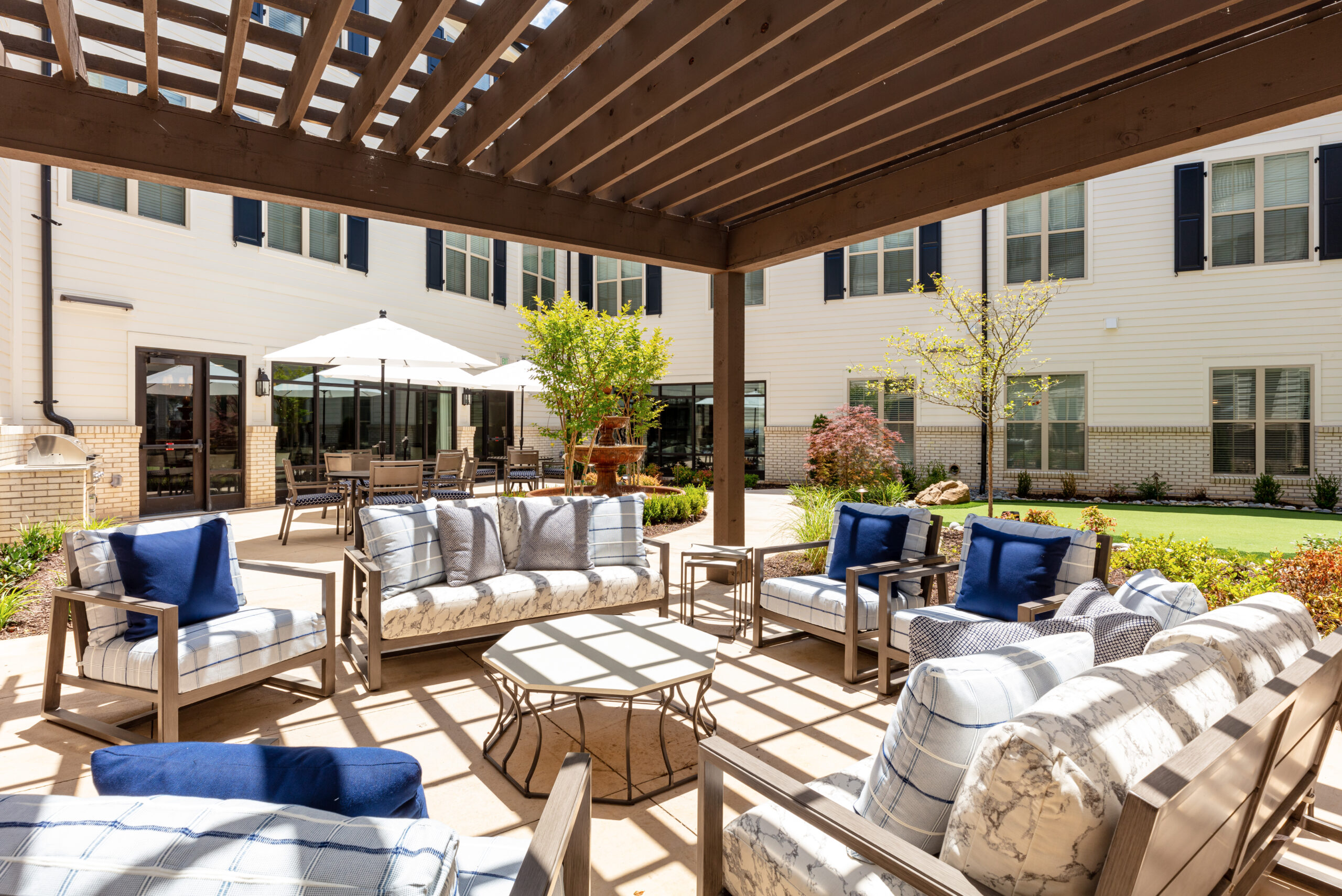
Leave a lasting impression with tailored, experiential designs for Senior Living
Our design experts can help you incorporate these strategies into existing spaces and scale solutions to meet your budget. Thinking about your next renovation or refresh? Explore our design services or fill out the form below to learn more.
Not ready to start your design project just yet? Discover more Senior Living Design trends.
If you are an interior designer, contact our Designer Link team for all your design and procurement needs.
